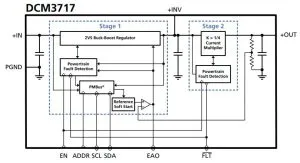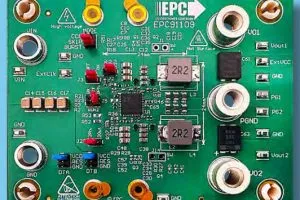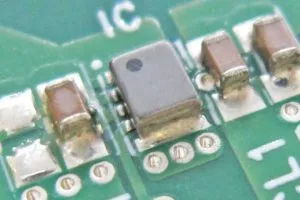
“Power delivery networks are making a decisive shift from 12V to 48V architectures to take advantage of higher efficiency,” according to the company. “The benefits of using 48V have been illustrated in high-performance computing, automotive and in many other applications. However, this opportunity presents design challenges for legacy systems that have been optimised around 12V architectures for decades.”

To bridge 48V to 12V, Vicor is offering three power supplies, all non-isolated: DCM3717 (37 x 17 x 5.2mm) at 750W or 1kW, and the 2kW DCM3735 (37 x35 x 5.2mm).
All operate from 40 to 60V and produce a regulated output adjustable across 10V to 12.5V (12.2V nominal).
~20% more current or power is available for 1ms, and paralleling is possible for more power.
These are two-stage converters, with a regulating zero-voltage switched buck-boost dc-dc at the front end, followed by a fixed-ratio 4:1 current multiplying (voltage dividing) second stage – which is both zero-voltage and zero-current switched. Feedback for the first stage is taken from the output of the second stage.
Both stages have independent variable frequency operation, and pulse‑skipping is available to improve light-load efficiency.
A PMBus interface is available for control and telemetry.
The 2kW version will be available later this year, the other two can be bought now.
 Electronics Weekly
Electronics Weekly



